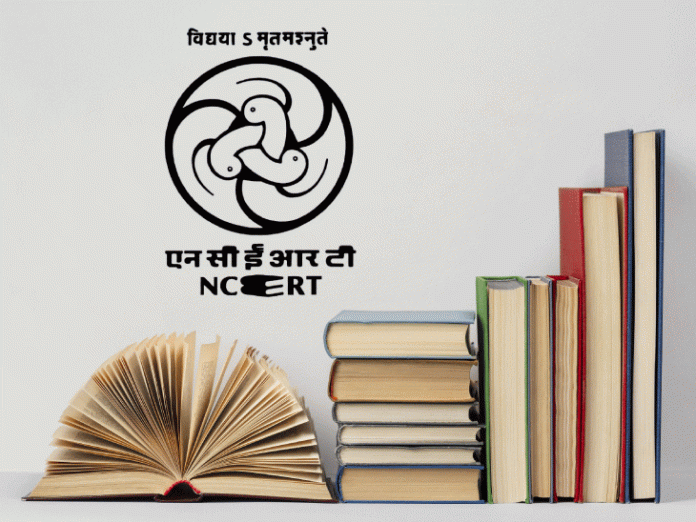– Muhammad Abdullah Javed
History is not just a past, it stands in continuity with the present. As Ibn Khaldun rightly pointed out, “the past resembles the future more than one drop of water resembles another”. So, teaching history as a subject at the school level is more than just a subject. With the help of history, often called the mother of social sciences, we probe and expose the past to enlighten our children about its relevance for today. There are many facets that reveal the essence of history, the rich heritage is one such that loudly speaks of the nature and style of the dynasties that once ruled.
In this context, it is important to understand in what sense the major changes made by NCERT to its Class VII Social Science textbooks by removing all references to the Mughals and the Delhi Sultanate affect our understanding of the essence of history spanning several centuries. The Delhi Sultanate was established in 1206 and lasted until 1526, equivalent to a 320 year period of rule. The Mughal Empire, established in 1526, lasted until 1857, covering 331 years. These periods account for more than six and half centuries of consistent historical developments. The NCERT’s decision of removal of these vital references create a significant historical-void of the subcontinent’s past.
The truth-denying initiative by the present regime raises serious concerns. The following are the arguments that help understand the underlying reality behind the removal of important parts from the history book.
** Since the history taught in post-independent India covers a major portion of the Indian subcontinent’s past, then how can the removal of the Delhi and Mughal periods be justified? In what sense does the absence of such a substantial chunk of history help students understand the cultural, civilizational and geographical evolution evident in India’s rich heritage? How do we explain to our children the origins and importance of the lofty historical monuments like Qutub Minar, Taj Mahal, Agra Fort and Fatehpur Sikri? What do we tell them about the significance of Lal Quila and its surrounding Maidan from where we see heart-warming celebrations of Independent and Republic Days? How can we explain the roles of Rana Sanga and Shivaji in relation to Babar and Auranzeb, respectively?
** The NCERT explains “the primary objective of teaching history is to foster an understanding of how human societies and cultures have evolved over time. This involves exploring major historical periods, understanding the processes of change and development and appreciating the contributions of different cultures to the world’s heritage. NCERT also emphasizes developing critical thinking skills, encouraging students to analyze historical sources and understand how historians construct narratives”. Is it possible to realize these objectives by removing important chapters from history and hiding the truth and realities that are quite evident from our cultural heritage and collective memory?
** Teaching history can be beneficial only when the information it contains is processed without bias and served as knowledge. As a catalyst for this process, it becomes imperative to synchronize the human struggle and their contributions. Then, in what sense does the absence of past empire’s achievements that have shaped India’s political, cultural and architectural heritage, make the knowledge of history beneficial?
** The series of events like wars, revolutions, revolts, rise and fall of empires, fortunes and misfortunes of the rulers as well as the role of general masses take place at a particular point of time and shape history in their own way. In what sense does it remain history if certain events are omitted and then remaining rest is haphazardly connected? How can the fragmented narrative claim to represent the past in totality?
** How can our present be justified in the absence of the past? The trajectory of evolution of human history rises to the height of the present only by beginning with the past, then how can an era spanning centuries be missed out? How can history remain in its pristine form if the continuity of time is marred by omissions? Therefore, removal of these chapters could potentially distort historical developments and the political and cultural changes of that period. Such omissions prevent students from critically engaging with India’s past journey by denying them access to all the elements that shaped it?
The true way of understanding history is not just as a subject, but as a collective past. A past that has both brighter and darker shades. As humans, we can’t expect every dynasty, kingdom and ruler to be just all the way. Some transgressed the limits and oppressed the people; some ruled the general masses with justice and equality. The pages of history are but positive and negative shades. No matter what, history as such is akin to a home of mixed children, good and the troublesome, we can’t think of a sweet home by putting aside the troublesome children.
Therefore, what really matters here is how history is presented to young minds. The objectives are best served when teachers adopt an unbiased and balanced approach of teaching history in its totality. While the good part of the history deserves imitation, the troublesome part needs to be critically examined to learn from the mistakes. Since the human conscience believes that the present can’t not be held accountable for the past. So, as a result, what remains in focus is the rich heritage that has been left by those who are not amongst us now but have made us the custodians of their legacy.




